Halobacterium salinarum is able to detect and react to a large number of different external stimuli. There are two major types of responses known. In the tactic response (phototaxis and chemotaxis) stimuli are forwarded to the flagellar motor as target. The other major response, regulation of gene expression, targets to the genome.
Phototaxis and Chemotaxis of Halobacterium
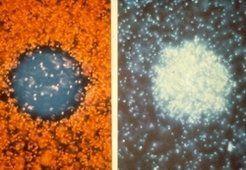
Analysis of the environmental response of Halobacterium, espially the phototactic but also the chemotactic response, is in the main focus of the department. This physiological is described from various points of view (e.g. physiology of the response, molecules and molecular complexes involved, modelling of the response).
Motion analysis

An elaborate motion analysis system was set up to experimentally analyze the phototatic response of Halobacterium.
Modelling of the phototactic response - a use case for systems biology
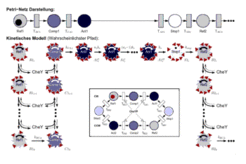
Modelling of the phototactic response is a use case for systems biology. A simple physical event (a photon of light) triggers a cascade of responses of increasing complexity that result in an observable physiological response (response of the Halobacterium motility system). Compurational modelling of the response allows to reproduce all experimental results obtained by several groups over decades of research.
Receptors and Transducers of the environmental response
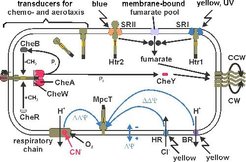
Receptors and transducer proteins are involven in perception of the environmental response. Halobacterium contains 18 different transducer proteins as identified by genome sequence analysis.
Flagella of Halobacterium salinarum and their biogenesis
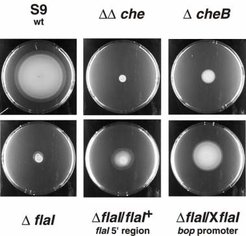
Upon swimming, Halobacterium cells are driven by their flagella. Cells are pushed forward when the flagella rotates clockwise and are pulled back when it rotates counter-clockwise. The biogenesis of the flagella depends on the fla operon.
Retinal proteins of Halobacterium salinarum

Retinal proteins are directly or indirectly involved in phototaxis of Halobacterium.
Bacteriorhodopsin
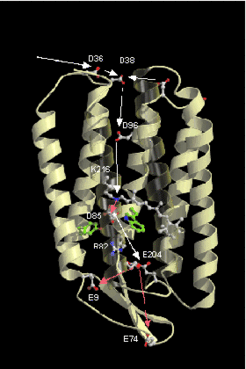
Bacteriorhodopsin is indirectly involved in phototaxis.
Signal transduction cascade - Short description
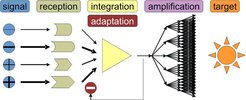
The phototactic response of Halobacterium exemplifies a typical signal transduction cascade, which consist of reception, integration, amplification, adaptation and targeting.
Two-component system from Halobacterium
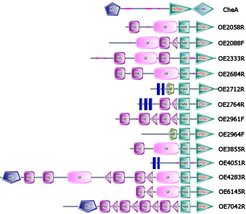
Two-component systems other than cheA/cheY may be involved in environmental responses that target to the genome and result in transcription regulation.
Two-component system - short overview

A short general description of two-component systems.









